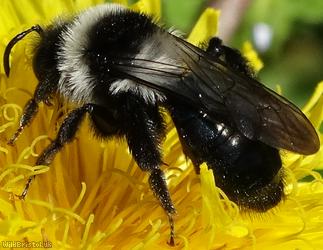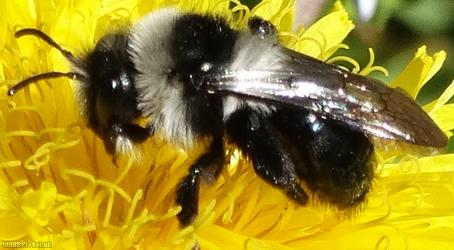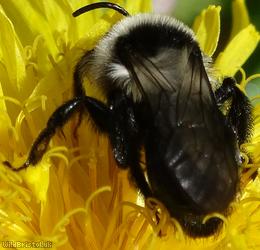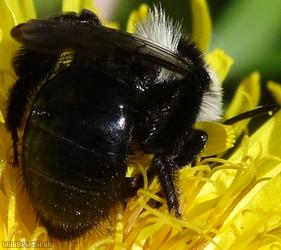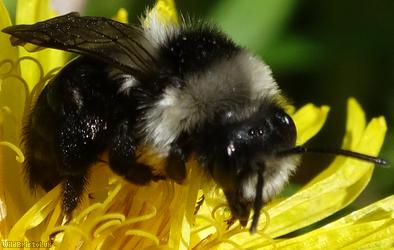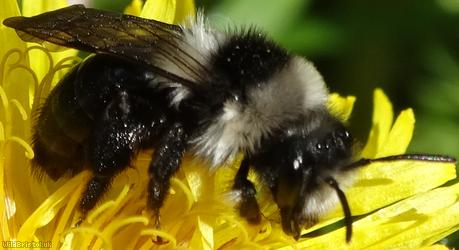Ashy Mining Bee - Andrena cineraria
Favourite Photos
Species Description
Widespread and fairly frequent throughout England, Wales and parts of N. Ireland, becoming more scattered elsewhere. Habitat includes: open woodland, gardens, parks, allotments, cemeteries, road side verges, moorland, coasts, calcareous grassland (S. England), river banks, old quarries etc. on friable chalk, silt, clay soils, lawns, golf courses etc. Flight period: March to June sometimes July (peaks in April and May) and has been increasingly seen in September and October on Ivy. Diet: Pollen from Spring flowering and shrubs such as: Rape, Cow Parsley, Buttercups, Buttercups, Mustards, Roses, Rough Chervil, Silverweed and Nectar from: Brambles, Cabbages, Prunus (Blackthorn, Wild cherry, Plums), Dandelion, Daisies, Gorse, Hogweed, Pears, Thrift, Wood Spurge. Life story: Nesting occurs along footpaths, south-facing slopes, sheep-grazed hillsides, places with rabbit activity where a burrow is excavated to a depth of 10 - 20 cm with 2 to 3 cells per nest. The burrow entrance is left open during foraging, but at the end of these flights, rain and disturbance closes off the burrows. The bee overwinters as adults within the cells. Parasites: Lathbury's Nomad Bee, Dark-edged Bee-fly, Dotted Bee-fly, Bee-grabber Fly, Oil Beetle sometimes develop in its nest. Other names include: Grey Mining Bee.
